
SPLASHING ABOUT IN THE COAL PIT
From mining to tourism
In the days of the former East Germany, more than 65,000 miners were employed in Lausatia's coal mining sector. Thousands lost their jobs when mines shut down in the 1990s. To compensate, the region decided to boost its tourism sector, and the transformation has been ongoing ever since. Almost 37,000 acres of land ravaged by mining will eventually become Europe's biggest water playground.
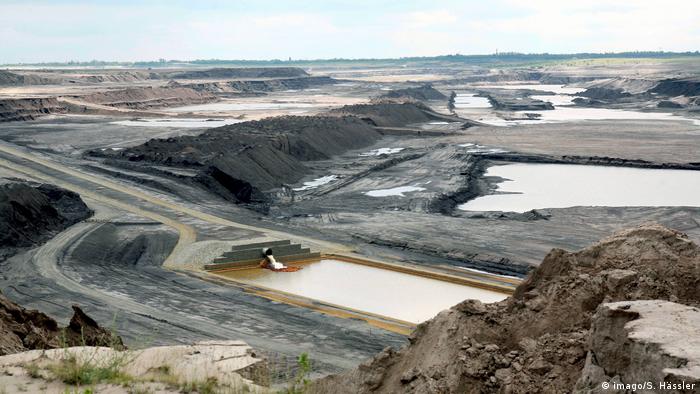
SPLASHING ABOUT IN THE COAL PIT
Total transformation
Today, this former open-pit mine is the site of Lake Senftenberg. It is surrounded by 7 kilometers of sandy beaches and lawns for sunbathing. The East German energy sector relied heavily on brown coal. But after reunification in 1990, dozens of coal pits were shut down. This lake actually formed after the mine started flooding in 1967 and the first 'beach section' was commissioned in 1972.
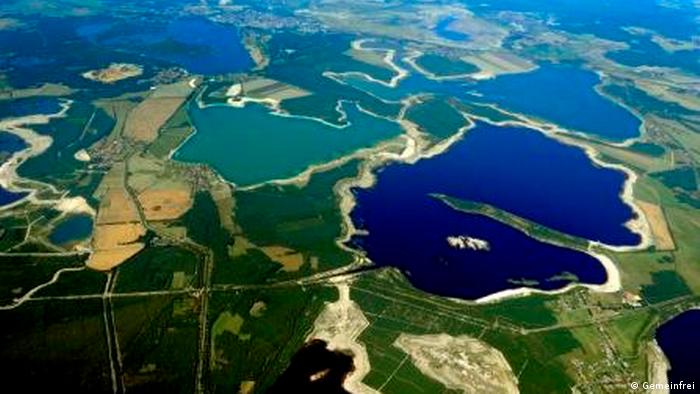
SPLASHING ABOUT IN THE COAL PIT
Water, water, everywhere
Water, water, everywhere
Lake Geierswald and Lake Partwitz are just two of the 25 pit lakes in the area of Lausatia that spans the state borders of Brandenburg and Saxony. To keep their levels steady, water from the rivers Spree, Lusatian Neisse and Black Elster flow into the former mines. Without the artificial flooding, it would take 80 to 100 years to fill a pit naturally with rain and groundwater.
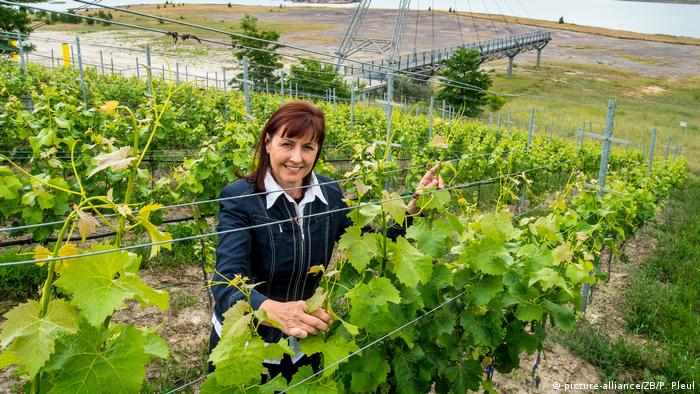
SPLASHING ABOUT IN THE COAL PIT
Taste of the mines
Johanniter or Pinotin? Cornelia Wobar grows both grape varieties on the only steep slope in Brandenburg, above the former open-cast mine that is now Lake Grossräschen. Wine experts say Brandenburg's intensely acidic soils have excellent potential for viticulture. The first wine produced from grapes grown on a former strip mine hit the market in 2008.
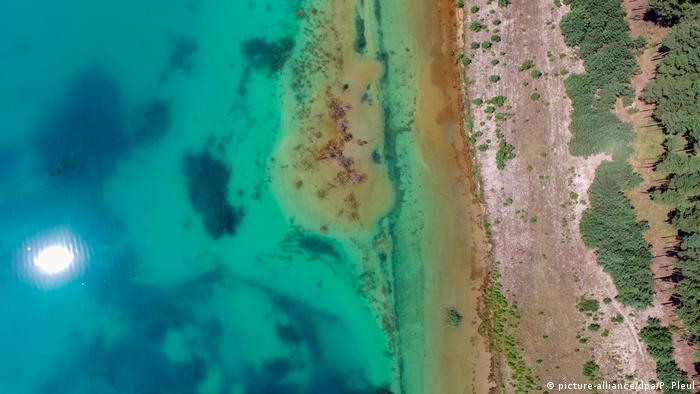
SPLASHING ABOUT IN THE COAL PIT
Almost like the Caribbean
The glowing turquoise color of Lake Partwitz comes from quicklime added to the waters to neutralize acidity — a legacy of the mines. As a result, there is little plant and animal life, but the lake is safe for swimmers. Lake Partwitz was built on the former lignite mine at Geierswalde, a village in Lower Lusatia, and was fully flooded in 2015.
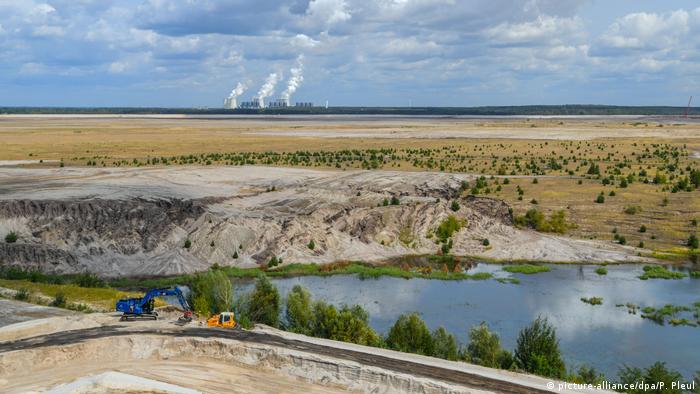
SPLASHING ABOUT IN THE COAL PIT
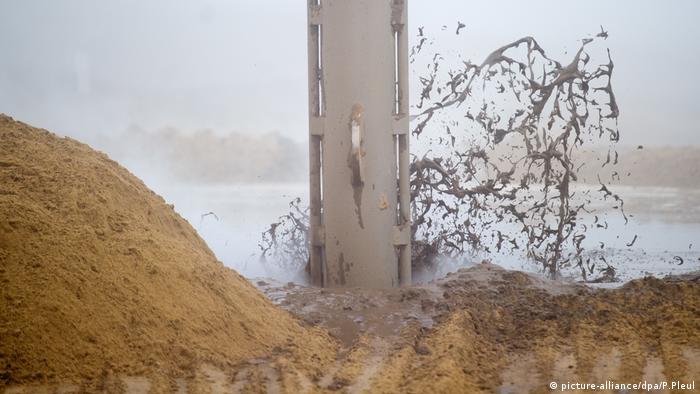
SPLASHING ABOUT IN THE COAL PIT
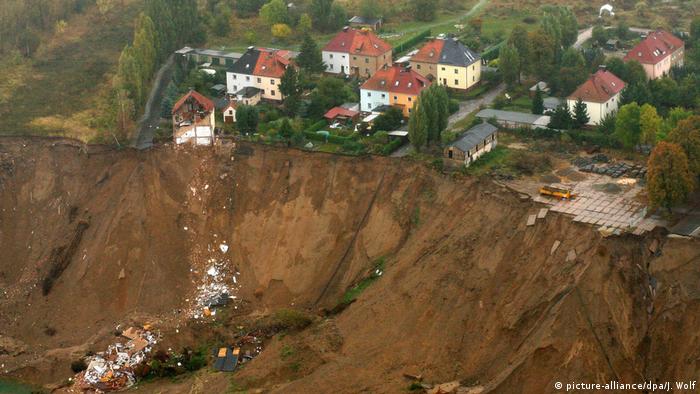
SPLASHING ABOUT IN THE COAL PIT
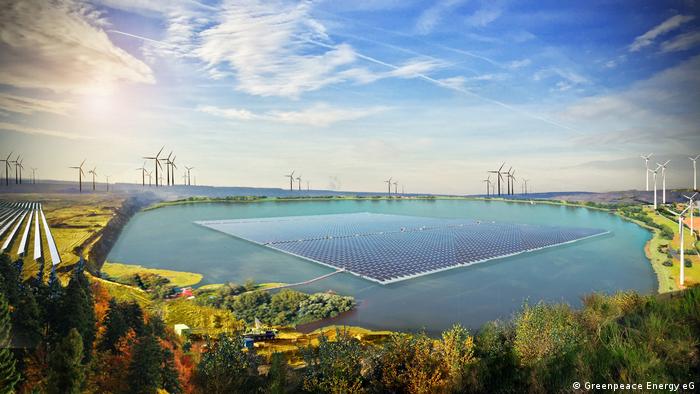
SPLASHING ABOUT IN THE COAL PIT
A renewable future?
Greenpeace Energy has another vision for the former coalfields. As of 2020, it wants to buy open-cast mines from the RWE Group, shut them down by 2025 and build large-scale renewable energy plants that would generate roughly a quarter of the power RWE currently produces in the Rhineland mining region. To date, RWE has not agreed to sell its land.
Author: Theresa Krinninger
The end of black coal mining in Germany
https://www.dw.com/overlay/media/en/the-end-of-black-coal-mining-in-germany/46824749/53686045
After more than 150 years, the industrial mining of black coal in Germany is coming to an end with the closure of the Prosper-Haniel mine in Bottrop. It marks the sad finish to an era of black gold in the Ruhr Valley. (21.12.2018)

SPLASHING ABOUT IN THE COAL PIT
Almost like the Caribbean
The glowing turquoise color of Lake Partwitz comes from quicklime added to the waters to neutralize acidity — a legacy of the mines. As a result, there is little plant and animal life, but the lake is safe for swimmers. Lake Partwitz was built on the former lignite mine at Geierswalde, a village in Lower Lusatia, and was fully flooded in 2015.

SPLASHING ABOUT IN THE COAL PIT
Germany's biggest swimming lake
In early 2019, the energy group LEAG began flooding Lake Ostsee near Cottbus. Altogether, a million cubic meters of water will have to be added before the lake opens to the public. That's supposed to happen by 2025. LEAG had to stop its first trial flooding in 2018 after an exceptionally dry summer; the Spree River water levels were too low.

SPLASHING ABOUT IN THE COAL PIT
Preparing the ground
Turning a former coal pit into a lake isn't as simple as just opening the floodgates. First, loose soil needs to be compressed to avoid the risk of landslides. Special vibro-compression technology, like this soil compactor working the former surface mine in Jänschwalde, near the city of Cottbus, are put into action.

SPLASHING ABOUT IN THE COAL PIT
Disaster in Nachterstedt
Without proper precautions, disaster can strike. On July 18, 2009, a massive landslide on the southern shore of Lake Concordia in central Germany carried three houses away, killing three people. An investigation found that high pressure in the aquifer, combined with loose dump material underwater, were to blame for the accident. The area is still being redeveloped.

SPLASHING ABOUT IN THE COAL PIT
A renewable future?
Greenpeace Energy has another vision for the former coalfields. As of 2020, it wants to buy open-cast mines from the RWE Group, shut them down by 2025 and build large-scale renewable energy plants that would generate roughly a quarter of the power RWE currently produces in the Rhineland mining region. To date, RWE has not agreed to sell its land.
Author: Theresa Krinninger
The end of black coal mining in Germany
https://www.dw.com/overlay/media/en/the-end-of-black-coal-mining-in-germany/46824749/53686045
After more than 150 years, the industrial mining of black coal in Germany is coming to an end with the closure of the Prosper-Haniel mine in Bottrop. It marks the sad finish to an era of black gold in the Ruhr Valley. (21.12.2018)
No comments:
Post a Comment